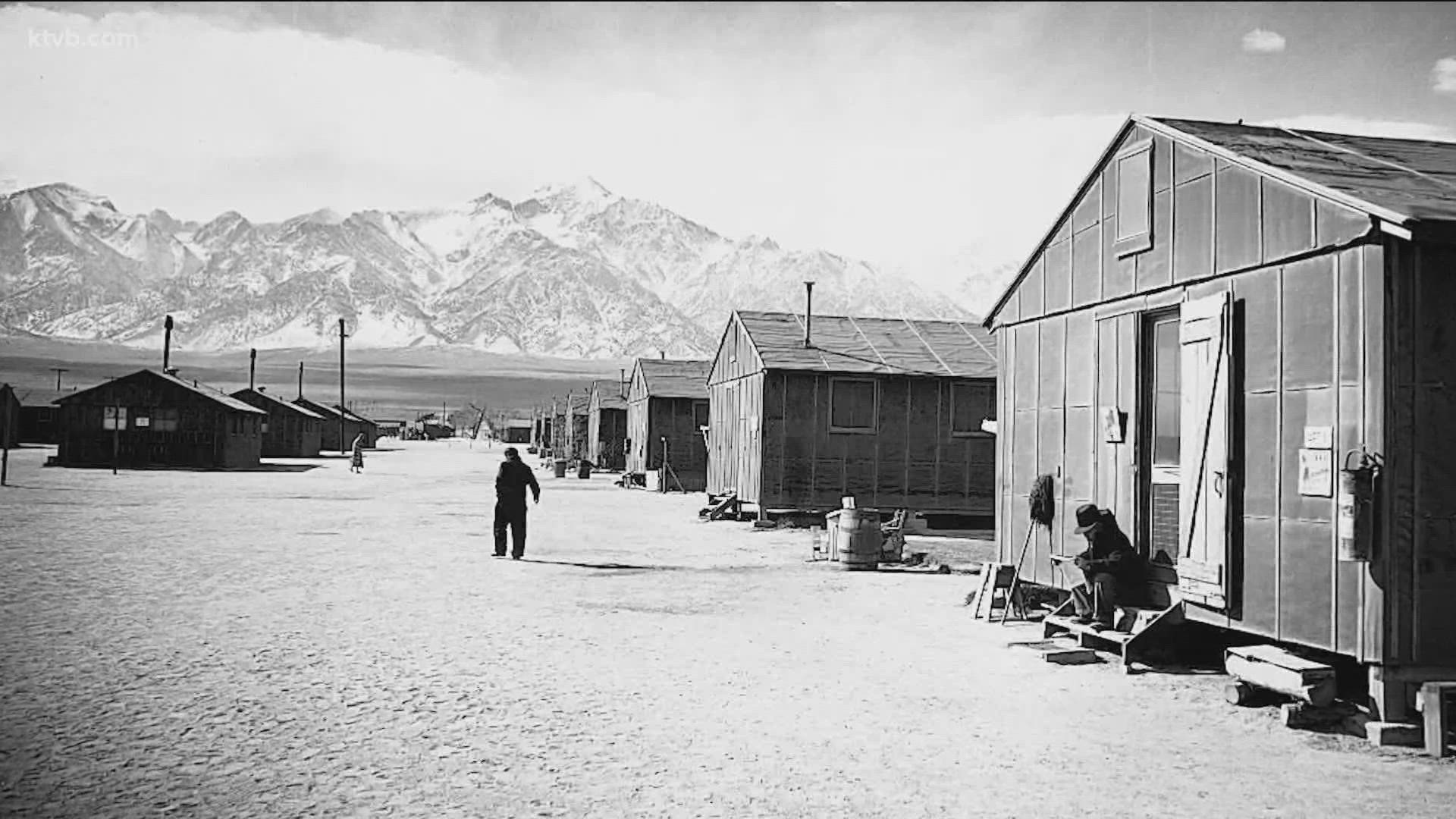JEROME, Idaho — 80 years ago, the first of nearly 13,000 Japanese-Americans were sent to the Minidoka Internment Camp in south-central Idaho. It was one of 10 across the United States opened to "relocate" people of Japanese ancestry after the bombing of Pearl Harbor during World War II.
On Wednesday, the Minidoka National Historic Site was named one of the 11 most-endangered historic places in America by the National Trust for Historic Preservation.
It did not appear on the list because of its age or due to growth, but because of a proposed project to build one of the largest wind farms on public lands in the country. The proposed wind farm is within two miles of the visitor center and includes 400 wind turbines.
"We are extremely disturbed by the proposed wind project and its disregard for the sacredness of Minidoka National Historic Site where 13,000 Americans of Japanese ancestry were unjustly incarcerated during World War II," Executive Director for Friends of Minidoka, Robyn Achilles said. "Minidoka is a memorial to all those who suffered at the site. Survivors and their descendants make emotional pilgrimages to Minidoka where they remember, heal, and share stories to ensure these violations of civil liberties do not happen again. Minidoka is our past and our future."
Achilles added the Friends of Minidoka -- which preserves the history of the World War II incarceration experience -- supports renewable energy, as long as projects respect historic sites. The organization urges the Bureau of Land Management (BLM) to protect the Minidoka National Historic Site.
“Minidoka National Historic Site serves as a critical and painful reminder of the fragility of democracy,” Chief Preservation Officer of National Trust for Historic Preservation, Katherine Malone-France said. “Eighty years after the first Japanese Americans were wrongfully incarcerated at Minidoka, Asian Americans continue to experience anti-Asian violence, harmful stereotypes, and hatred. Minidoka reminds us of the mistakes of the past so that we can do better in the future, and it must be preserved and protected as a sacred site of conscience in the ongoing fight against hate and racism in our country.”
The Lava Ridge Wind Project is proposed by LS Power, a New York private equity company. The proposed area is on "the historic footprint of Minidoka," Friends of Minidoka said. The project is on 73,000 acres of BLM property adjacent to Minidoka and 25 miles northeast of Twin Falls.
Mary (Tanaka) Abo, who was sent to the Minidoka Internment Camp at 2 years old from Alaska with her mother and around 100 other wives and family members, said the wind farm should be a great distance away from the site.
"It just seems that it was plopped down there thinking that wind trumped memories and a sacred site," Abo said. "To us, who lived there, it's a sacred site and wind turbines need to be far, far away. Otherwise, you don't get the feeling that you are a prisoner of the U.S. Government unless you see that it was a prison."
The senior director for LS Power, Luke Papez, said the site is in an area with good wind resources near existing connections to the power transmission grid. Papez said the company has been coordinating with stakeholders and discussing concerns about the site and the proposed wind project "for some time now."
"We do feel that there is a pathway forward for both of them to coexist. I think honestly, there's a tendency here, there's an assumption that just because this is proposed in the vicinity, that it's automatically going to have an impact," Papez said. "It would be good to know and to understand that the BLM is conducting a very through analysis, and that analysis includes multiple alternatives that will have varying setback distances from the national historic site and will be very telling and informative whether the wind facility will actually have an impact on Minidoka."
Papez added that LS Power is looking forward to the BLM's draft environmental impact statement, and the analysis results, "to inform what the actual impact could be to Minidoka."
The National Trust for Historic Preservation has published 'America's 11 Most Endangered Historic Places' each year since 1988 in an effort to raise awareness of sites in the United States in danger of being lost.
David Sakura, who was sent to the Minidoka Internment Camp from Washington at 6 years old, said he still remembers the room he stayed in and the images "tattooed in my memory," 80 years later.
Sakura said he is "appalled that someone would desecrate my home, my one room in a barracks in Minidoka with a wind tower."
"My mother, with my father gone, tried to maintain a semblance of normalcy, so she would take us on a picnic. We would walk through the sagebrush infested with rattlesnakes to the perimeter of Minidoka, to the barbed wire fence in the shade of the watch tower we would have our picnic," Sakura said. "Those watchtowers, the barbed wire, is now the site of the wind farm and one of the closest approaching wind towers is right within yards of 15-8-E."
To learn more about the proposed project and the Minidoka National Historic Site, visit the Friends of Minidoka website.
Watch more Local News:
See the latest news from around the Treasure Valley and the Gem State in our YouTube playlist:

